According to an 1802 advertisement in the Hampshire Chronicle, these JDW premises stand on the site of ‘the Bolton Arms Inn, late the Maidenhead Inn’. Before it was used as a bank, this was an ancient hostelry called the Maidenhead Inn. It was at this inn, in 1686, that Sir Henry St George, second King of Arms, with his pursuivants and attendants, held his court to register the pedigrees of local gentry. This was the last ‘Heraldic Visitation’ held by the officials of the College of Arms.
Prints and text about Basingstoke’s market.
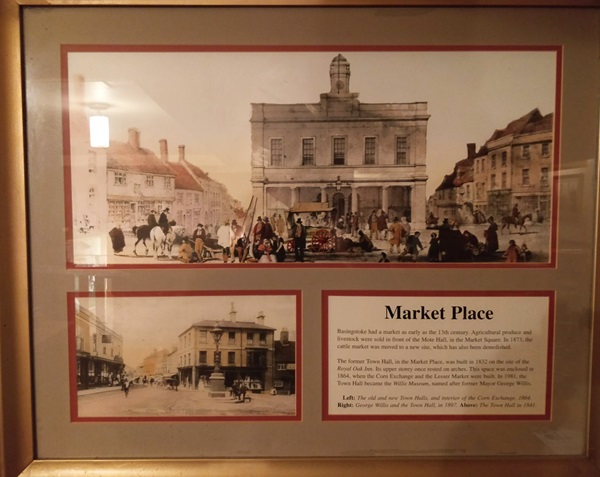
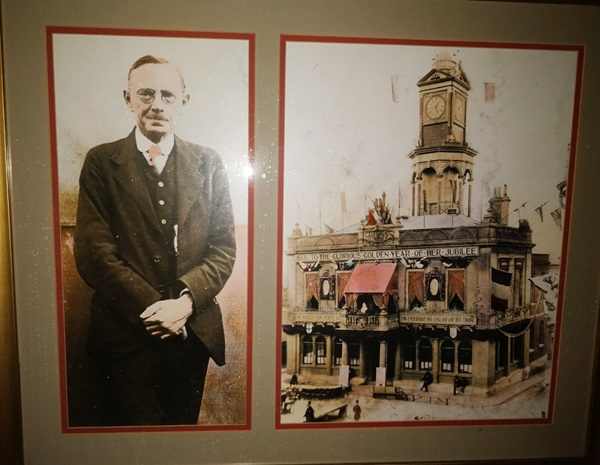
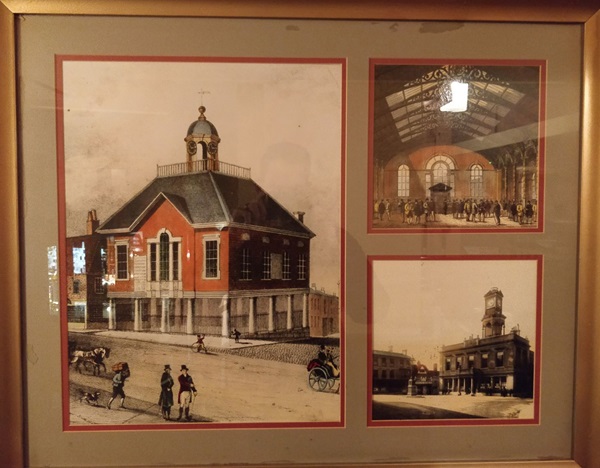
The text reads: Basingstoke had a market as early as the 13th century. Agricultural produce and livestock were sold in front of the Mote Hall, in the Market Square. In 1873, the cattle market was moved to a new site, which has also been demolished.
The former Town Hall, in the Market Place, was built in 1832 on the site of the Royal Oak Inn. Its upper storey once rested on arches. This space was enclosed in 1864, when the Corn Exchange and the Lesser Market were built. In 1981, the Town Hall became the Willis Museum, named after the former mayor George Willis.
Left: The old and new Town Hall, and interior and the Corn Exchange, 1864
Right: George Willis and the Town Hall, in 1897
Above: The Town Hall in 1841.
Photographs and text about May’s Bounty.
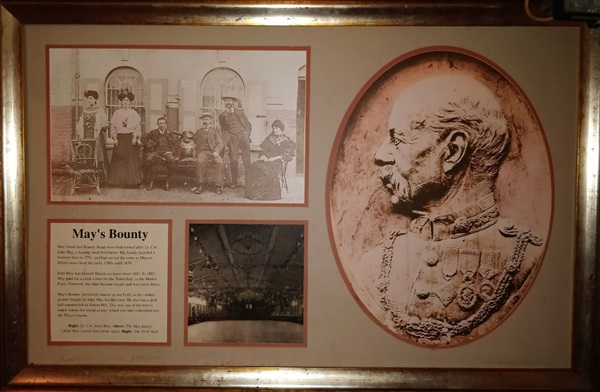
The text reads: May Street and Bounty Road were both named after Lt Col John May, a leading local benefactor. His family founded a brewery here in 1751, and had served the town as mayors fifteen times from the early1700s until 1839.
John May was himself mayor six times from 1833. In 1887, May paid for a clock tower for the Town Hall, in the Market Place. However, this later became unsafe and was taken down.
May’s Bounty, previously known as the Folly, is the cricket ground bought by John May for the town. He also had a drill hall constructed on Sarum Hill. This was one of the town’s major venues for social events, which was later converted into the Plaza Cinema.
Right: Lt Col John May
Above: The May family (John May seated third from right)
Right: The Drill Hall.
Prints and text about the history of transport in the area.
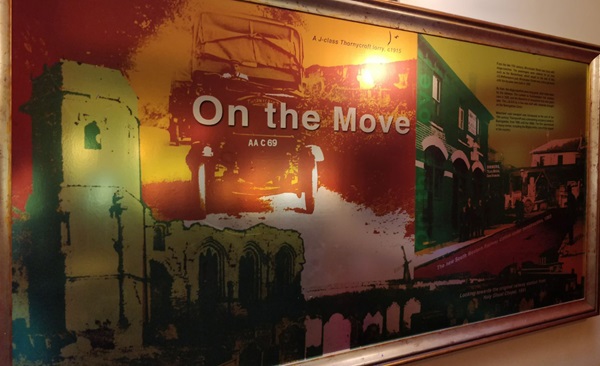
The text reads: From the late 17th century, Winchester Street was busy with stage coaches. The passengers were catered for by inns such as the Maidenhead, which stood on the site of this J D Wetherspoon pub. Winchester Street was a through route until the by-pass was built in 1930.
By then, the stage coaches were long gone, their trade taken by the railways. The London to Southampton line reached here in 1839, and the Berkshire & Hampshire line nine years later. The L&SR Co’s line was built with materials brought on the Basingstoke Canal.
Motorised road transport was introduced at the end of the 19th century. Thornycroft was a pioneering company based in Basingstoke, from 1898 until the 1980s. The form specialised in heavy lorries, including the Mighty Antar, one of the largest in the country.
Prints and text about high society.
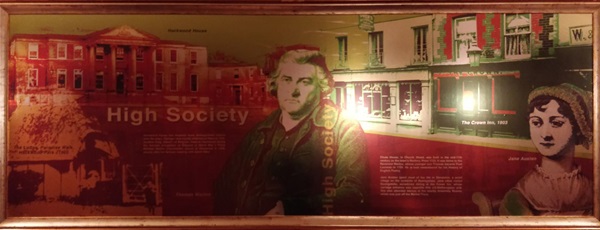
The text reads: Chute House, in Church Street, was built in the mid 17th century as the town’s Rectory. From 1723, it was home to the Reverend Warton, whose younger son Thomas became Poet Laureate in 1785. He is best remembered for his History of English Poetry.
Jane Austen spent most of her life in Steventon, a small village on the outskirts of Basingstoke. Jane often visited Basingstoke, sometimes dining at The Crown Inn, whose carriage side entrance was opposite this J D Wetherspoon pub. She also attended dances at the nearby Assembly Rooms, which was just off the Market Place.
External photograph of the building – main entrance.
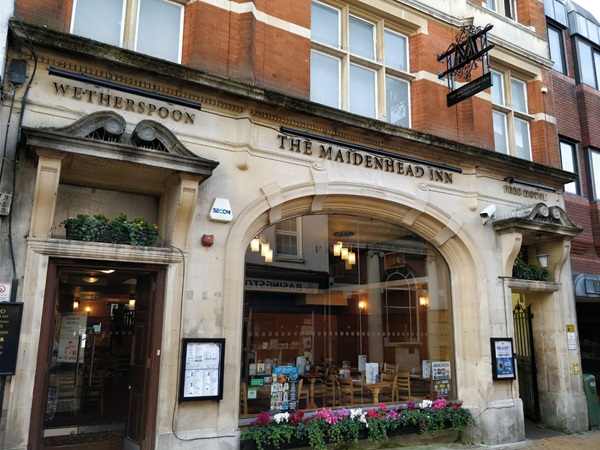
If you have information on the history of this pub, then we’d like you to share it with us. Please e-mail all information to: pubhistories@jdwetherspoon.co.uk